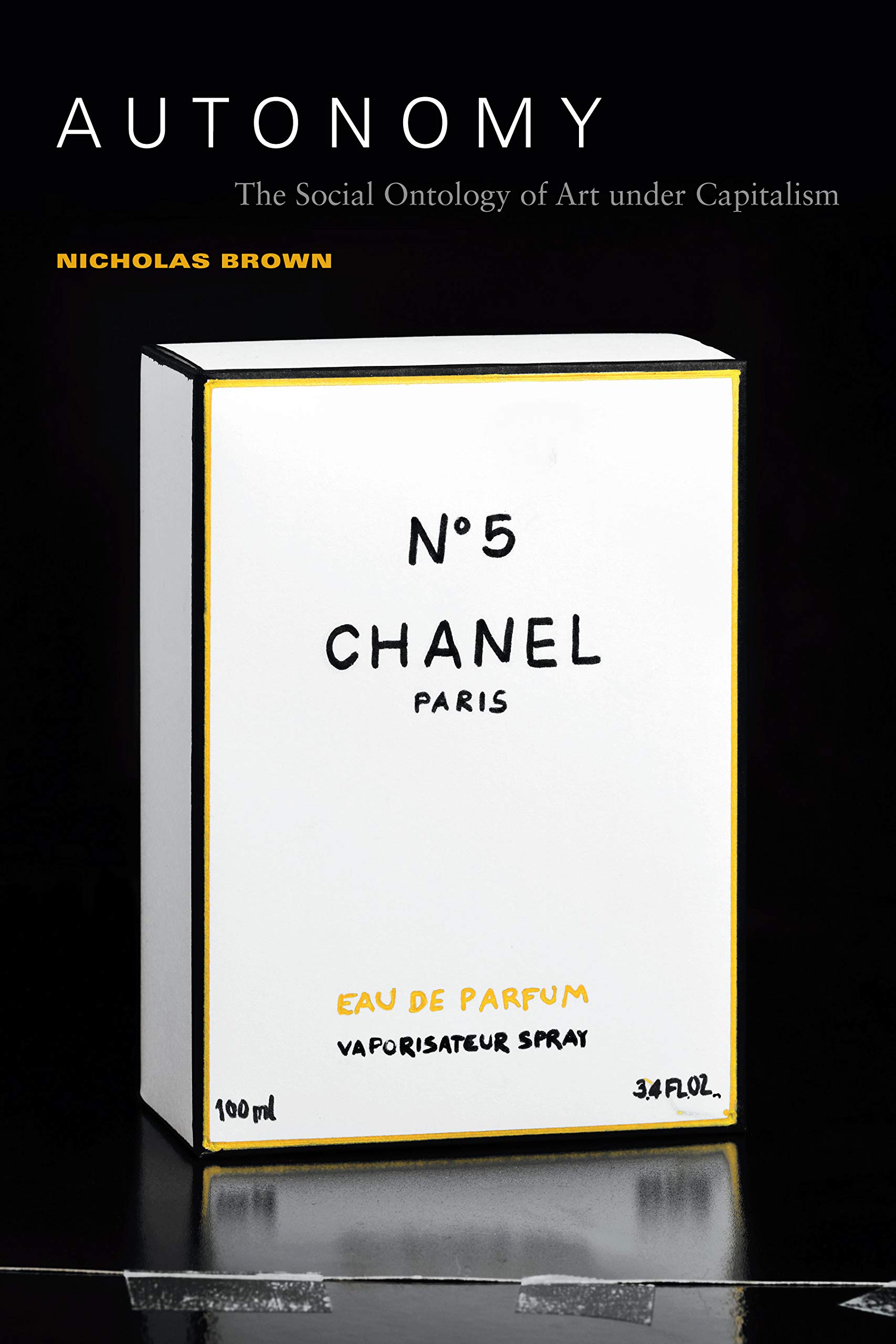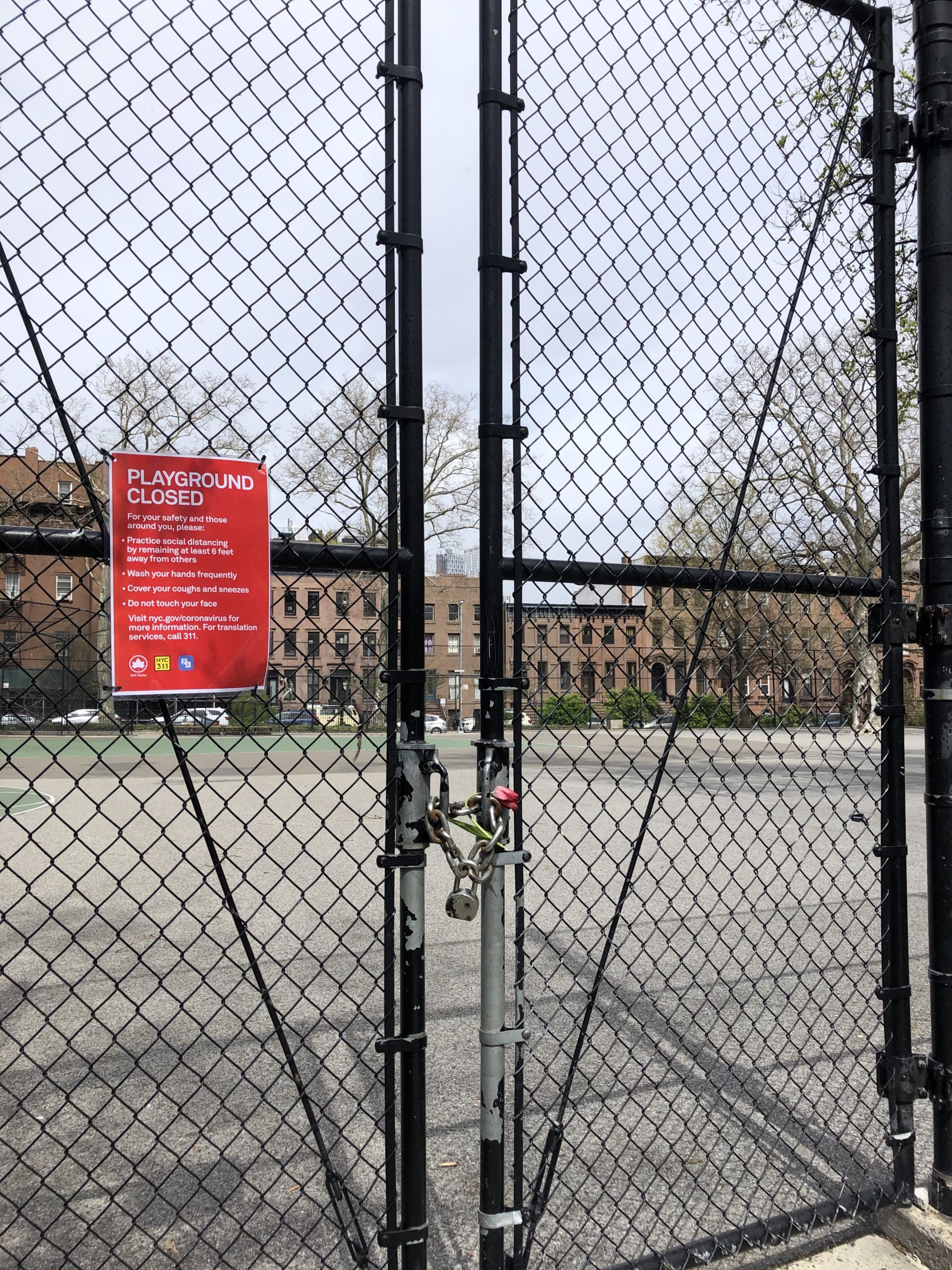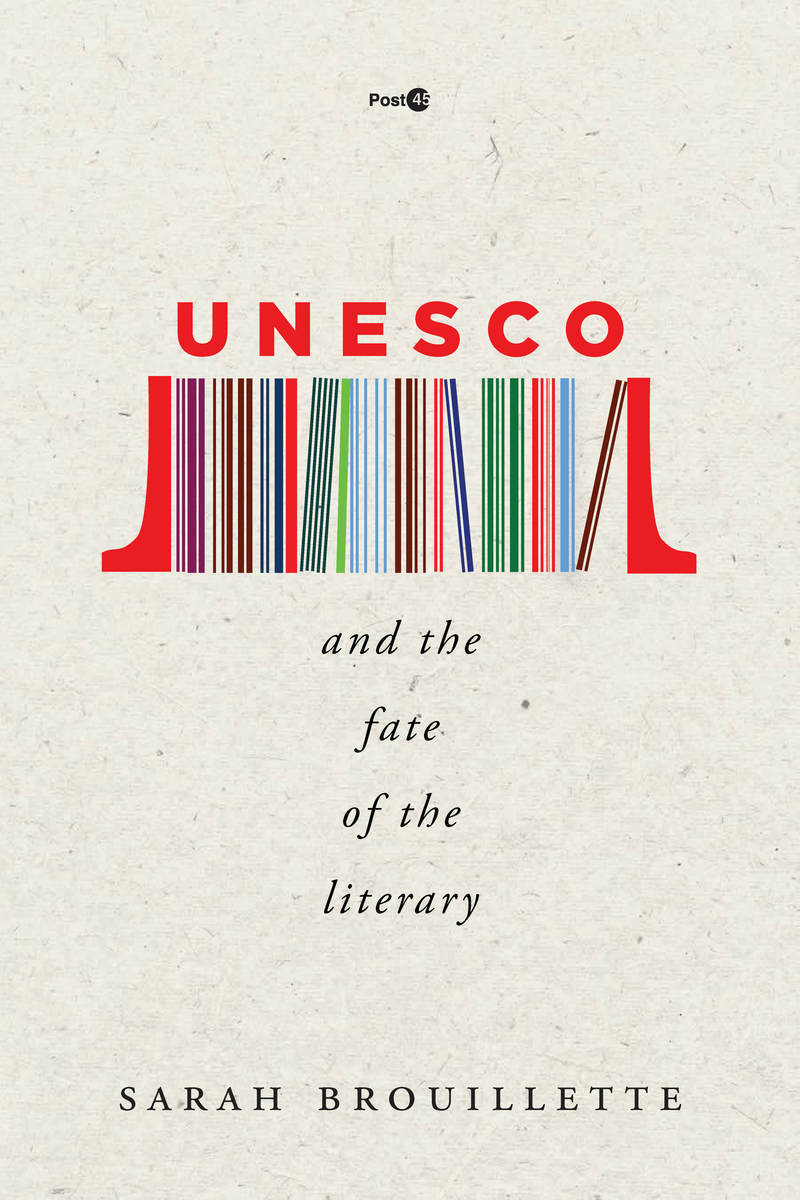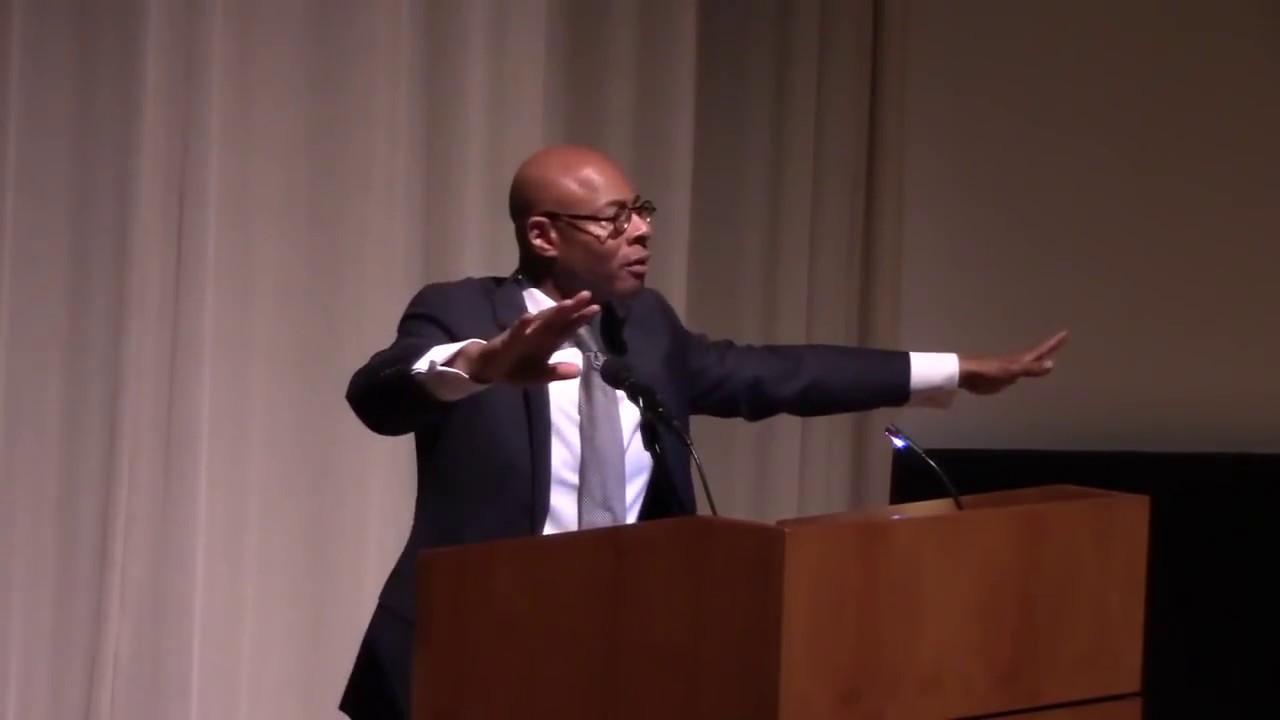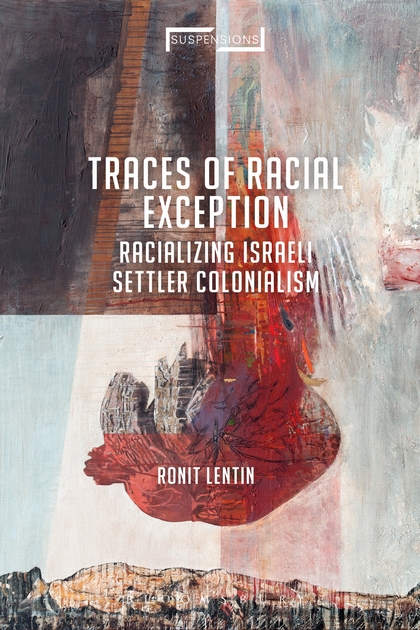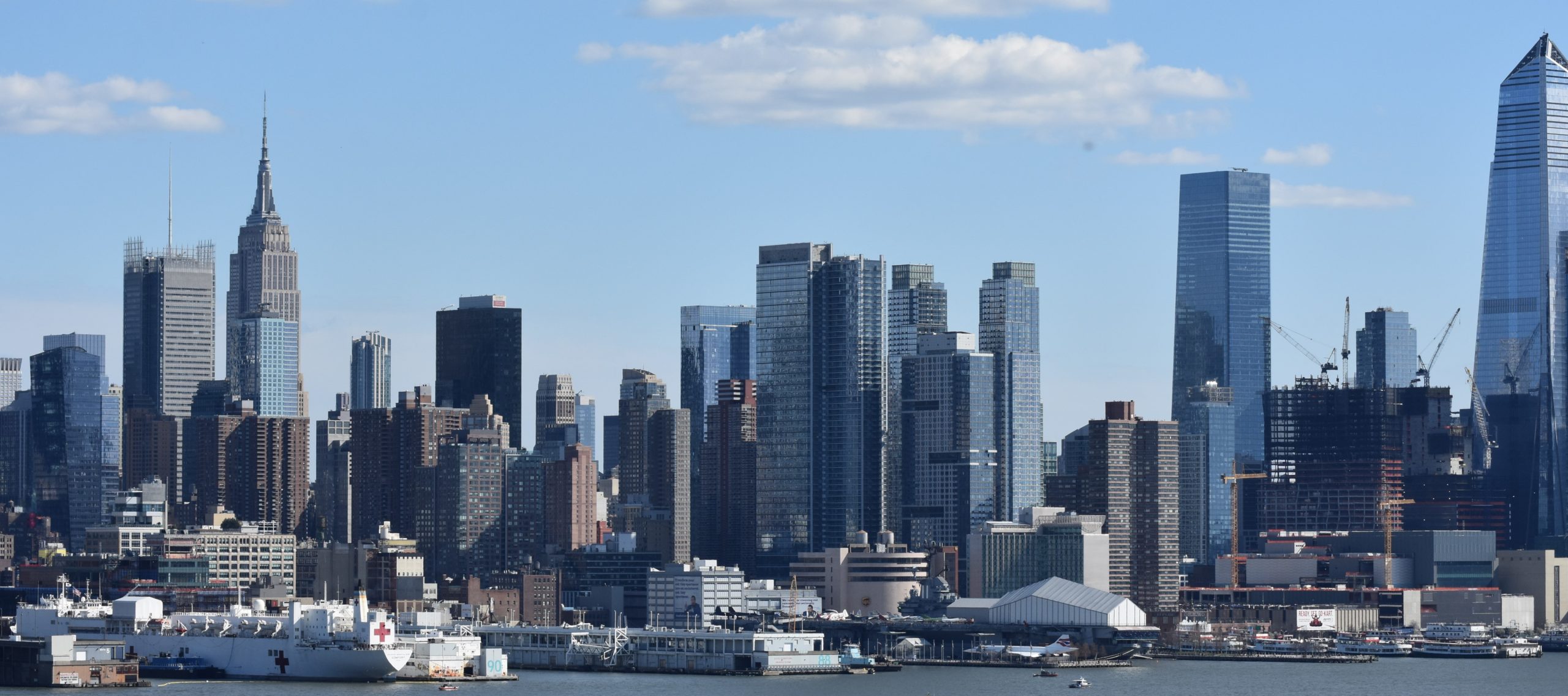
In the Spring of 2019, Adom Getachew and Chris Taylor co-taught a seminar on “The Global Plantation.” In the following exchange, Getachew and Taylor consider the pedagogical, disciplinary, and theoretical challenges that emerge out of attempts to think about the plantation an adequately global, transnational, or postcolonial fashion.—Leah Feldman
Dear Adom,
I hope you are in good health. Let’s talk about the plantation.
I want to begin with a question that is at once pedagogical and conceptual. In our course, we read key texts and concepts of canonical European political theory alongside various histories of, and historical material drawn from, the plantation. Under the rubric of “Property,” we spent a class on Locke’s Treatises; in subsequent classes we read Walker’s Appeal, John Jea’s slave narrative, scholarship on colonial property relations, and so on. One of the things that struck me, across all of our units, is the minimal presence that the plantation as a nameable institution maintains in the European political-theoretical texts that we selected to emblematize concepts. Locke, for instance, doesn’t use the term once in the Second Treatise. And I think that this observation can be scaled up: the plantation really isn’t a named object or institution in European political theory through the eras of slavery and emancipation. The terms “planting” or “plantation” do pop up to name the sovereign act of establishing colonies, as in Bacon or Harrington; in Gonzalo’s speech in The Tempest, “plantation” names the possibility of founding utopia. But, generally speaking, European political theory through the eras of slavery and abolition doesn’t really think about, think from, or refer to the institutional form or political-social relation of the plantation, and certainly not with anything like the robustness with which it will think about and from topoi such as the family, say, or civil society. This is perhaps an ongoing problem; consider the frequent Caribbeanist complaint that Agamben takes the camp, not the plantation, as the paradigm of modernity.
Obviously, any given corpus of texts won’t talk about lots of things, and I’m not interested in saying that European political philosophers should have thematized the plantation—as if, say, Hegel’s Philosophy of Right is fatally compromised because the plantation doesn’t appear as a moment in the development of the ethical state. I’m not lamenting or castigating an absence, or diagnosing a disavowal. My question is more something like this: Once we posit (or accept) the exorbitance of the plantation from the referential world of European political theory, what nonetheless can be thought or is made thinkable through a staging of their encounter? This was, I suppose, the premise of our course, but it was a hard premise to maintain in pedagogical practice. Generally, we thought about the plantation via a metonymy, through political theory’s omnipresent figure of the slave. I think this caused a kind of pedagogical wobble in our class, inasmuch as its object continually risked replacement. But I’m curious how you—if you agree with my rather inflationary claim—think about the plantation’s minimal referential place in European political theory from the eras of slavery and abolition. One set of questions I could pose would be broadly symptomatic: What might this absence tell us about political theory, its composition of its proper objects, and perhaps the composition of its canon? I don’t think these questions adequately get at what interested us in the course or what interests us in our research. So, maybe the better question to pose to you: What analytic, methodological, conceptual, or political possibilities are opened up by this absence? What happens to our reading practices when we force a relation despite a deficit of reference?
Best,
Chris
**
Dear Chris,
Hope you are doing well.
Thanks for getting us started.
You raise important questions about the absence of the plantation in the history of European political thought. I want to first take up the problem of cannon composition and the reading practices that emerge alongside this composition. It is first important to note that both the subfield of political theory and its canon from roughly Plato to Nietzsche are very much products of the mid-twentieth century. Think here of the books that inaugurated the canon and the field—George Sabine’s History of Political Theory (1937), Leo Strauss’s Natural Right and History (1953), and Sheldon Wolin’s Politics and Vision (1960). (I leave aside here Quentin Skinner’s Foundations of Modern Political Thought (1978) both because it is later and because I think it is responding to this earlier set of framings.) I think the construction of the canon does a number of things to the kind of reading practices we employ. We are taught (and often also teach) the texts of this canon as part of a tradition that has as its primary object questions of order, justice and legitimacy within a bounded political unit. We also read these texts for a straightforward set of prescriptions or to identify what they authorize or don’t authorize. We discussed this most concretely in the case of Locke and slavery and the long-standing debate about whether one can find support for or against the transatlantic slave trade and chattel slavery in the Second Treatise. As you show in your forthcoming article “Divine Servitude against the Work of Man: Dispossessive Subjects and Exoduses to and from Property,” however, we might be better served by thinking through the connection between chapter 4 (on slavery) and 5 (on property) of the Second Treatise. In this exercise too we will not find a justificatory theory of slavery, but we can locate a way of thinking about self-ownership and property that came to dominate debates about slavery.
There has been currents in the field of political theory that have resisted the set of approaches I identify above and for these last two decades this has inaugurated a whole body of scholarship on the place of empire and the extra-European world in canonical texts.[1] I think these interventions have done much to reconfigure the cannon to show how conquest, enslavement and colonization were central preoccupations for canonical figures and to diagnose the rhetorical and ideological strategies by which this centrality was also occluded.
We took a different approach. We didn’t read Locke, Hobbes, Hegel and Marx because approached in the right way or with the right frame the plantation would appear. Instead we read these authors as figures who wrestled with the concepts of property, sovereignty and labor alongside the historical development of the colonial plantation an institutional form that also was a site in which these same concepts emerged and were contested. Rather than think of this historical parallelism as an occasion to unearth a tighter connection, we took it as an invitation to read these two spaces together. The consequence for our reading of canonical texts of political theory was to resist reading them as instantiations of a fully articulated systems of thought, but as also sites where these concepts are worked over and contested. Like the plantation itself, these texts of political theory were scenes of conceptual instability, rhetorical effects, and theoretical generativity.
In my view our class was less concerned with reading for a theory of the plantation than reading around the plantation. What I mean by this is that we were really interested in maintaining the plantation as a concrete form while attending to the set of theoretical conundrums and possibilities it opened. At its core, the plantation as a concrete form is an institution for the large-scale production of agricultural commodities. But beginning from this, the plantation emerged from the first day of class as a complex politico-economic unit. Reading around was a strategy of taking up one dimension of the plantation say the ways it structures labor and thinking through how this reframes or reorients out conceptualization of the plantation. The upshot of reading around was to be theoretical promiscuous, to draw from a variety of genres, disciplines and historical moments in ways that helped us theorize its place in the development of the modern world and the specific kinds of political conundrums and possibilities it makes visible. With regards to the canonical texts of political theory, viewing them as one set of resources that are enabling in certain respects and require supplementation in other ways is a refreshing and I think liberating approach to the study of the history of political thought.
I don’t mean to suggest that this strategy was very stable or fully realized in the course. At its center was this effort to simultaneously maintain concretion and theoretical abstraction. I should pause and say that insisting on the plantation as a concrete institution was an effort to avoid a tendency to read it as a metaphor or metonym for racialized enclosure. At the same we turned to the plantation for its theoretical generativity, for the ways that it could offer new ways of conceiving property, sovereignty or labor.
Perhaps the instability of this exercise or the limits of a “reading around” contributed to our falling back on to the figure of slave—a figure that perhaps due to its omnipresence in political theory makes the encounter between concretion and abstraction less like an encounter. (Though that too might generate its own dilemmas.) In our course this reversion back to the figure of the slave took a couple of forms. First many of our texts were drawn from the Anglophone Atlantic world of the late 17th to the early 19th century. Second, within this focus the plantation itself often dissolved as the object of analysis. Our most productive conversations centered on texts like Maria Stewart’s “A Lecture on African Rights and Liberty” and David Walker’s Appeal, article IV, John Jea’s The Life, History, and Unparalleled Sufferings of John Jea and James Williams’s A Narrative of Events and Robert Wedderburn’s Axe Laid to the Root. To varying degrees, but in all of these texts, the plantation itself is not the site of extended reflection or critique.
Beyond the question of text selection, the way in which the plantation collapses into the slave raises two questions. The first is about the relationship historical and otherwise between the plantation and chattel slavery. On the one hand, the plantation lives on well after the abolition of chattel slavery. At the same time, there is perhaps ways in which its emergence with chattel slavery in the Americas structures the plantation in ways that we are constantly drawn to this historical instantiation. Second, I wonder about the conceptual incoherence or instability of the plantation itself. Does falling back to the slave index the theoretical slipperiness of the plantation?
One place though where this displacement didn’t occur is our engagement with the New World Group. Our mutual interest in the work of figures like Lloyd Best, George Beckford, and Kari Polanyi Levitt prompted the course and our ongoing conversations. In their work you find a very explicit effort to theorize the plantation and you find often a recourse to Weberian ideal type theorization. (You see this earlier too in Edgar Thompson’s The Plantation.) I find the parsimonious conceptualization really attractive. It trains us to stay with the plantation itself, to think concretion and abstraction simultaneously. I take one of the central aims of their project to be building social and economic theory that can be generalizable from specific experiences and trajectories of the plantation economies of the Caribbean. This work comes out of a 1960 critique of the limits of development economics and so much of their work stays within the frame of economics. But as Best himself, notes at the end of his 1968 essay “Outlines of a Pure Plantation Economy,” theorizing plantation societies requires not only a reconsideration of the economics, but a “drastic lowering” of the disciplinary boundaries between sociology, economic history, political science, economics, anthropology. What do you make of the New World Group’s commitment to producing a theory of the plantation, to generating conceptual coherence? What do you find productive and limiting in their approach to the study of the plantation? What kinds of questions does the humanistic study of the plantation elevate or make available that might otherwise be occluded?
Look forward to hearing your thoughts,
Adom
**
Dear Adom,
Please excuse my delayed reply. I want to pause on a phrasing you used to describe how we tried to read: We weren’t “reading for a theory of the plantation” so much as we were “reading around the plantation.” I think this is right on, and I guess my recourse to perhaps dead-end questions of canon or disciplinary formation owes to my excitement over and frustration with the necessity of reading-around. Reading-around might be something like an ecological hermeneutic, a way of thinking about what happens to political-theoretical or politico-economic concepts when they are environed within the uncited scene of the plantation. This doesn’t require assumptions about logical or chronological priority: e.g., the plantation provides the paradigm of sovereignty, the plantation developed the modern regime of property, and so on. The idea was rather more like: What happens to a particular conceptualization of X when planted in this soil? The work of this interpretive mode is, as you say, much different than reading through concepts for the plantation, or some component of the plantation world. Reading-for is, I think, fated to a methodology that is by turns hyper-historicist and allegorical. Hegel was reading this newspaper through these dates; “Lord and Bondsman” should thus be read as an abstracted encoding of the Haitian Revolution. Locke was writing chapter five of the second treatise in the summer of 1682, when he was also at work on the constitution of the Carolinas; his theory of property is thus always already a colonial theory of property. It’s not that I think such arguments are wrong, or that such endeavors are valueless. My issue is that this method or mode always risks reproducing a still-entrenched division of labor wherein (post)colonial worlds acquire epistemic value only upon mediation or filtration through the pen of a European Master Thinker—a situation of metropolitan value-addition that Lloyd Best called the “Muscovado Bias.” Reading-around creates space for thought to happen elsewhere, even if our thinking with or recomposition of this thinking is almost irreducibly speculative.
There’s something else I want to emphasize and open up in your account of reading-around, and the way the mode wants to conjugate the concrete and the abstract. You want to “insist” on the plantation as a concrete institution,” and this insistence on the concrete entails a definitional insistence, too. “At its core,” you write, the plantation “is an institution for the large-scale production of agricultural commodities.” You make these two points—that the plantation is a concrete institution, and that its purposive priority is extensive agricultural commodity production—“to avoid a tendency to read it as a metaphor or metonym for racialized enclosure.” This stood out to me for a couple of reasons. Part of what you’re marking, I think, is a hiatus between politico-moral uses of history and the study of it. I’m thinking here, in part, of the lowkey debate between Angela Davis and Ruth Wilson Gilmore, with the former seeing the prisoner as metaphorically and materially continuous with the slave and the latter refusing that identification, for various compelling reasons. Gilmore refuses the identification because it risks obfuscating the local, quite recent developments that spurred mass incarceration; at the same time, she wants us to see the prison as the punitive institution of non-work, as a kind of warehousing of human surplus. To an extent, then, Gilmore’s strategy is to relinquish the moral and affective charge the comes through the metaphorical identification or metonymic re-placement of slave and prisoner, and she wants to do this so that we may better specify the institutional dynamics and meta-institutional logics that produce and reproduce the golden gulag. What’s at stake for you in holding onto the plantation in its concreteness, as an institution oriented toward mass commodity production undertaken by racialized and generally bonded laborers? What’s at stake for you in differentiating this institutional form from the other kinds of racialized enclosure for which it might serve as a metaphorical figure or metonymical antecedent?
I’m asking this question to get at another that you raised. We wanted to read around the plantation, to stay within its concrete space, but we really wound up spending a lot of time theorizing (through) slavery. I’m not sure if this classroom recourse indexes anything about the conceptual coherence or stability of the plantation, to be honest. Most people in a US seminar room will have a repertoire of images, ideas, and thoughts about slavery, whatever the adequacy of this repertoire to histories of slavery. The representational repertoire around the plantation is much smaller, and likely to be tethered to slavery anyhow. Shifting from classroom expedients to just knowing things, though, I don’t think that the plantation is a slippery analytic object, provided that one doesn’t take it as an object susceptible to simple indicative predications. It becomes slippery, I think, the moment one wants to say something like, “The plantation is a unit of enterprise that produces primary agricultural goods for a foreign market with coerced labor and low levels of technical investment.” I think confusion becomes inevitable at that point; the is is too static. The world system moves, and the plantation moves with it—at least, that’s what I read Tomich as arguing. And, yeah, in this regard, the New World Group is indispensable. As you put it in your forthcoming essay on the New World Group and Walter Rodney, the NWG group worked with two methodological aims in mind: specification (of the Caribbean plantation economy) and comparativity (to non-Euro-American, Third World sites and histories). Like you, I tend to find the ideal-type constructions limiting, but I get it: the desire is to stabilize the outlines of an analytic object in time. When we did Best’s “Outline of a Pure Plantation Model,” I think all of us in the room tacitly maintained a compact that we would not even try with the symbolic logic stuff. But, you know, at the end of the essay Best self-mockingly—but for me productively—restates his text’s method of presentation: “The foregoing statement has been cast roughly and with some inconsistency and repetition, in histoire raisonnée, in an accounting formulation and then in slightly more formal economics.” That is, he more or less serializes three forms of representation in order to specify the shifting constraints, imperatives, and dynamics that compose the plantation (and a broader plantation economy) through time. I think what we get here is an image of the plantation as an institution that’s continuously transforming, whether from immanent or world-systemic pressures, and rarely in directions of its own choosing. The representational schema might seem abstracted (at least, to me), but they illuminate moments in the concrete life of the plantation, how it grows with (concrescere) and decomposes within the world-system due to various forces it can’t control.
One of the things that I love about their mode of theorizing is the extent to which the NWG displaces the decades-old scholarly problem regarding the capitalist character of the plantation. In Best’s hands, I think, one sees that the plantation economy is installed within a broader capitalist world-system but is unable to operate within that world-system as other firms or regional economic blocs might. So, I think the ideal-typical thrust of their modeling allows us to see the law-like regularities that shaped the dynamics of an institution central to the life of capitalism in the “hinterlands” of the world-system–which is to say that it allows us to see the plantation as structurally subordinated to the global law of value but structurally precluded from adapting to it as either imperial/national economies or individual firms in the core might, would, or could. For me, this clears a great deal of epistemic space, and allows us to think about how capitalism’s mode of appearance shifts in the plantation world without altering the capitalist character of the plantation. For instance, as I argue in Empire of Neglect, the fantasy of the chivalrous, hospitable, paternalistic planter was not in any way antithetical to capitalism; the supplementary presence of the planter was required to offset the conditions of incalculability (per Hall) that made a mess of any attempt to generate a rational accountancy of the plantation. Planter paternalism (an ideology that wasn’t nearly as developed in the British West Indies as it would be in the US) is a thin moral corollary to a far more robustly articulated planter hyper-empiricism, which was itself just the epistemological transcription of a managerial and accountancy problematic: for a variety of reasons, planters couldn’t rationally plan, couldn’t systematize things, and so someone had to be there to embody flexible authority and responsiveness. Pulling back, the NWG offers humanists a structural but dynamic account of the weird, dual character that plantations inhabit in the works of planters, pro-slavery ideologues, and abolitionists alike. I think of it as the planter’s two bodies: unfailingly sovereign, irreducibly precarious.
Let me end by going back to the conclusion of Best’s essay. Like you, I love his insistence that the plantation requires an interdisciplinary approach. Part of his writ for this claim is that the plantation scrambles scales: “the distinction between macro and micro dissolves. The firm incorporates into its behaviour the properties of the general institutional framework and the resource situation, etc.; and the relations of the typical firm with the outside world describe the market form. Thus, for the Caribbean, at any rate, the theory of the firm, the theory of international economy and the theory of growth and development seem to require a single cogent statement. Related to this, the barriers between sociology, political science, economic history, anthropology and economics, as such, need a drastic lowering.”
This strikes me as a singularly important insight. Tethered to it is his demand that academic economics be rethought on the pedagogical level; economic history and the history of economic thought, he insists, needs to acquire a greater prominence in postcolonial economics classrooms. So, there are two things at work here. First, Best wants–or plantation economy requires–a genuinely political economy. Second, the capacity to articulate this theory requires a refamiliarization with economic history and, as he will continue, with the history of economic thought. Within our institution, I don’t think either of us has the fantasy that the econ department is going to really turn to history any time soon. But we both work with economic history and the history of economic thought. How are you thinking about and with the plantation in the new research you are conducting? How does it draw upon or depart from the NWG’s aspiration toward a cohering account of The Plantation?
looking forward!
Chris
**
Hi Chris,
Thanks for pushing on the discussion of concretion, especially through the debate between Davis and Gilmore. Partly at stake for me too is holding open a space between, as you put it, the “politico-moral uses of history and the study of it,” especially in the context of the classroom. Many of our students came to the class with an interest and investment in the ways the plantation can be thought as an antecedent or metonym for racialized enclosure more broadly and the contemporary carceral state, in particular. I don’t think this is necessarily wrong and I certainly identity with the political project it seeks to ground, but two things worry me about the move. First, when viewed primarily as the ur-form of racialized enclosure, the kinds of politically and theoretically generative tensions that Best and others open are harder to make visible and take up. Against their effort to stay (analytically) with the plantation, to specify the object in time, the metaphoric invocation of the plantation tends to draw us to the task of mapping various forms of exit from the plantation. In staying with the plantation, we can better track the simultaneous sovereignty and precarity the total institution of the plantation engenders or the combination of its being embedded in a global economy, while relying on demonetized subsistence farming, which open up ways to read the plantation beyond enclosure. The thing I have learned most from your work, especially your article, “The Plantation Road to Socialism,” is that attending to the competing and conflictual dimensions of the plantation illuminates modes of black futurity that exceed the idioms of escape and exit. I will come back to this. Second, I worry that when framed as an antecedent or metaphor for the carceral, its contemporaneity and co-presence disappear. A couple of months before we started teaching the class, In these Times reported on labor struggles in Honduran plantations where workers demanded union rights and compliance with domestic and international labor standards.[2] The worry here is that the plantation’s persistence as a site of a particular regime of labor process is occluded when the carceral is posited as its current iteration or instantiation. I think this also grounds my questions around the relationship between the plantation and chattel slavery as least as taken up in our class. Our mutual interests and orientations gravitated the course toward the Anglo-Atlantic world and we were clear we didn’t want to do an area studies inflected approach where the ‘global’ of our title would mean tracking as many geographic and historical iterations of the plantation as possible. Still, I wonder how we might have better captured or incorporated the durability of the plantation and its labor processes.
Embedded in the Davis and Gilmore debate, as I read it, is not only a distinction between the study of history from its moral-political invocation but also a question about what forms of narration and what choices of historical rendering might best serve their shared political project of abolition. I take Gilmore to be pointing not just to the disanalogies between slave and prisoner, but also arguing that however morally powerful such an analogy might be, it comes at the expense of distorting the specific political and economic conundrums that attend the carceral state (especially the problem of institutional “non-work”). In other words, the concern here is that the analogy constrains our political imaginaries by obscuring what the moral and political problem of the carceral is. This is just to say I am not wedded to a strict separation between moral-political use and the study of history as such. I think ultimately such a strict separation is not really possible so the question then is how to think about the relationship between the two. I think what opening space between them offers is an occasion to consider more systematically and explicitly the imaginative and strategic choices involved in the emplotment of history and its mobilization.
This leads me in a roundabout way to the New World Group. Largely situated within development economics and writing at a moment when the developmental postcolonial state is already in crisis, their intervention is in part an effort to disrupt a set of analogies that grounded the developmental model. Whether in the anti-communist, Cold War rendering of W.W. Rostow’s Theories of Economic Growth or in Arthur Lewis’s more considered “Economic Development with Unlimited Supplies of Labour,” the developmental model located the postcolonial world as an antecedent to the North Atlantic, on the path to replicating a universal model of development. What the NWG offers in this context is a specification of the emergence of plantation economies that undoes this historical modeling. This to be sure is a project they share with the interventions of dependency and world systems theorists. But through an exploration of the plantation, they show us how one specific vector of unequal integration in the world system generates divergent trajectories from the North Atlantic as well as for plantation societies across the Third World. Key to this move, as you note, is that they point us toward a view of “the plantation as structurally subordinated to the global law of value but structurally precluded from adapting to it as either imperial/national economies or individual firms in the core might, would, or could.”
I am drawn to the NWG for their commitment to building social and political theory from the postcolonial world. Their journal, New World Quarterly, which was published between 1963 and 1972, exemplifies this commitment. Though concerned primarily with the Caribbean, it featured articles from across the Americas and Africa. In its pages, they strove to simultaneously take up the shared predicaments of decolonization and they did so in the model of interdisciplinarity that Best recommends at the end of his essay.
Working within political theory, the idea of political theory from the postcolonial world is still a much-needed intervention. The discipline tends to take its categories of analysis as universal and imagines the global preponderance of its terms (sovereignty, for example) and institutions (the state) are proof of that universality. But this misses the imperial process that produced an uneven and differentiated integration into the world system, the ways for instance that the historical development of the postcolonial state disrupts our assumptions about the relationship between domestic and international. When imperial entanglements are more squarely examined as they have been over the last two decades, the field still takes it primary referent or addressee to be European political thought. You have already pointed to the limits of approaches that tend toward the historicist or allegorical. But even where Caribbean thought is brought to bear, for instance in the invocation of Eric Williams’s Capitalism and Slavery or C.L.R James’s Black Jacobins in the new histories of capitalism, the central question remains explicating the colonial origins of British/European industrialization and modernity.
To some extent, my first book, Worldmaking after Empire, exemplifies the pitfalls of this strategy. It employs anticolonial thought and a recasting of the history of decolonization to primarily engage contemporary normative theorists of international order. There were a variety of theoretical, political and professional reasons that led me to this set of choices, but as I now contend with the ways the book has been taken up, I wonder about the costs of such an approach. Namely, I think that what got lost was an effort to grapple with the legacies and afterlives of decolonization for the postcolonial world itself. I encountered the New World Group as I was finishing the book and what they modeled for me was an effort to conceptualize on their own terms the processes that have given rise to the political predicaments of the postcolonial world. Just as Best writes he has “taken the view that economic theory in the underdeveloped region at any rate, can profit by relaxing its unwitting pre-occupation with the special case of the North Atlantic countries,” I wonder what political-theoretic question might be opened for me if I were to forgo my unwitting preoccupation with speaking back to the field of political theory.
I think of the NWG as part of a broader project of mid-twentieth century Third World social science, which includes institutions like the University of Dar es Salaam, and the Council for the Development of Social Science Research in Africa, based in Dakar. In each of these contexts, social theorists grappled with the limits of inherited categories and sought to develop a theoretical vocabulary adequate to the distinctive trajectories of the postcolonial world. The neoliberal counterrevolution that marked the collapse of radical social and political projects in the Third World would also have devastating consequences for these emerging efforts to outline a new social and political theory. This cartography of mid-century Third World social science—its nodes of convergence, networks of circulation, and theoretical insights—has yet to be mapped. Ultimately, I think recovering these intellectual genealogies allows us to reimagine what a global political theory requires. Rather than a debate about the expansion of canon to include non-Western thinkers or to locate the global/imperial within the history of political thought (both important debates in their own right), the example of the NWG orients us toward the aim of theorizing the specific histories and trajectories of non-Western politics.
As I turn to a new project, I am interested in following the NWG’s lead on this question of specifying the processes, institutions and ideology by which the unequal integration of the postcolonial world in a global economy was effected. In Worldmaking, I argued that we should understand empire as less a question of alien rule than a structure of unequal integration that produces a racialized form of international hierarchy. Yet, I squarely focused on sovereignty as the primary site on which the structure of unequal integration is enacted. I want to turn in future work to the terrain of political economy and especially to the labor question. Picking up an under-explored thread, an anticolonial argument that labor conditions in African colonies amounted to an extension of slavery, I want to return to the nineteenth century to excavate the emergence of the colonial labor regimes that would be the object of this anticolonial critique. Specifically, I want to think with the chronological overlap between emancipation in the Americas and imperial expansion in Africa in order to examine the distinctive form of empire that emancipation engendered. I start with the justification of British imperial expansion in Africa as an anti-slavery and humanitarian project. Rather than focus on the false or flawed universalism of this justification, I am interested in thinking through its effects—a position you also take in Empire of Neglect. At this early stage, I think this will involve tracing how ideologies and strategies from the transition to free labor in the Americas were appropriated and taken up for the project of fashioning African colonial subjects as productive laborers. One vector of this transmission was the transposition of the plantation in new colonial contexts. Writing about colonial Tanzania, Rodney writes, “plantation production of sisal, rubber and cotton constituted the earliest and most important of the colonial economic activities of German East Africa.” The post-emancipation global life of the plantation, as reconstructed in an essay by Kris Manjapra, is, I think, a key component to understanding the political economy of unequal integration. But, this project will also require attending to contexts where plantations did not take root. For instance, unlike in German (and later British) East Africa, the colonial state and private corporations were never able to establish plantations in British west African colonies like the Gold Coast where peasant production of cocoa remained dominant. Still even here, the NWG models a way of examining peripheral economies as sites that are subsumed in the global economy while also containing competing and alternative trajectories.
If I am focused on the structures of conscription to a global economy that the plantation engenders, I read you as trying to work out how the plantation’s uneven relationship to the world system also makes it a fruitful terrain to trace radical and subaltern alternatives to capitalism. You have developed this line of argument in the “The Plantation Road to Socialism” and in “The Refusal of Work.” How did you come to see political possibility in the plantation? What’s at stake for you in recovering these possibilities? And how do you think about something like the plantation road to socialism in relation to the renewed attention to visions of black freedom centered on flight and marronage?
Adom
**
Hi Adom,
I so want that mid-century cartography of Third World social science to be mapped, and then the map to be disseminated. You know, I was trying to quickly recall what George Beckford’s BA was in, only to quickly encounter the fact that he doesn’t have a Wikipedia page. (A different set of Beckfords with a much different set of ties to Jamaica, however, do.) Epistemic loss—or maybe episticide, really—is such a weirdly compounding phenomenon.
My interest in thinking about the political possibilities of the plantation comes from two problematics, I think. As I noted previously, I am drawn to the NWG for the ways that their work displaces or suspends the historico-theoretical desire to specify the genetic relationship between capitalism and slavery. This is a personal shorthand for the fact that I am increasingly frustrated with the scholarship grouped under the brand of “the new history of capitalism.” My frustration owes in part to the very claim to novelty, which Peter Hudson has blisteringly addressed. But I’ve come to realize that the real source of my frustration is that I have a hard time figuring out the political aim or uptake of this work. These genetic accounts of capitalism are, in so many ways, reproducing the various kinds of transition debates that have flared up throughout the global intellectual history of Marxism and that are, really, coextensive with the development of Marxism. These debates, as scholastically Marxological as they might have been, were almost always oriented toward practical political questions that various Marxist and socialist and communist parties confronted in determining paths forward, coalitions to build across sectors and classes, strategies for national or regional linking or delinking, and so on. It is hard for me to emplot the new histories of capitalism within a similar field of political contention or ambition. Of course, that owes in part to the absence of anything like a robust, power-wielding commie left in the US, and it’s symptomatic that the sole political demand that can come out of this work is that of state-backed reparations. I am entirely for reparations, but I don’t think such a measure is in any way dependent upon tethering capitalism’s origins to slavery. In a kind of flat, silly way, my desire to think the plantation and its once-possible socialist futures is a desire to recall the actual political stakes of previous transition debates: to identify capitalism’s trajectories in order to develop strategies for dismantling it. Capitalism might be a narrative endpoint in left historiography, but it should never be the epistemological or political terminus of the story one tells.
The second source of my interest in thinking through the political possibilities of the plantation comes from my weird reading of a long line of anthropologists, economic historians, and theorists who take up the topos of enslaved people’s provision grounds or plots. Sylvia Wynter’s “Novel and History, Plot and Plantation” has always been one of my favorite essays, and, for Wynter, the figures of plot and plantation mark an agon between use value and exchange value, between relatively autonomous labor and racial-capitalist domination. Wynter describes the plot as fostering a use value-centered “folk culture,” one that “became a source of cultural guerilla resistance to the plantation system.” I think that’s probably the standard way of thinking about the function of the plot: it’s a space of fugitive independence, of self-direction. What I find interesting, though, is that, for Wynter, this agon between plot and plantation cannot assemble itself into a perfect opposition. Describing plot and plantation as “two poles which originate in a single historical process,” Wynter inscribes the enslaved or the emancipated agricultural prole in a space of ambivalence: “Since he worked on the plantation and was in fact the Labour, land and capital, he was ambivalent between the two.” Ken Post (another woefully under-appreciated thinker) makes a similar point. For Post, the slave plantation “in fact articulated two complementary (but antagonistic) modes of production,” planter-directed cash-crop production and enslaved-directed provision production. In the wake of emancipation, and on the basis of the provision ground system, “a free peasantry came into existence before any fully-articulated capitalist social formation had replaced that of slavery,” “a non-capitalist element within a capitalist articulation.”
I find all of this brilliant; and it’s on the basis of this brilliance that I think the plantation should be rethought. The plot, as Wynter and Post both suggest, cannot simply be opposed to the plantation because 1) it was posited by the plantation as the latter’s means of demonetizing subsistence and because 2) it provided the material scaffolding of the plantation. This is to say, then, that the plantation, as an ordinary part of its functioning, as a necessary part of its reproduction, immanently generated “a non-capitalist element.” We don’t normally think of the plantation in these terms—especially when the critical emphasis of the new history of capitalism is on North Atlantic capital formation and accumulation through the plantation. Meanwhile, the currency of keywords like “marronage” and “fugivitity” tend to presume that black political thought begins with the negation of the plantation, in a spatial and cognitive elsewhere. And that is absolutely a fair presumption. But I found myself drawn to a question: Is there a tradition of black political thought that strives to expand and generalize the non-capitalist elements immanently generated within the plantation system? Is there a tradition of black communist or anarchist thought that refuses the sequence of plantation slave to peasant producer to agrarian proletariat to some communist society to come, one that wants to leap from the plantation to the commune?
In a certain sense, then, I’m wondering if it is possible to think the plantation, or the plantation/plot assemblage, in ways similar to that of the late Marx on the Russian peasant commune or Mariategui on the Incan allyu—as a material and social form that contains immanent potentials, different than those of a world subsumed into liberal property relations, for communization. Robert Wedderburn is the punchiest pre-emancipation thinker on this, I think: he imagines emancipation as the scaling up of the provision plot, but also as the abolition of private property, the wage-form, and, in general, the mediation of access to goods through labor time. Wedderburn was a Spencean socialist (even as he radicalizes Spence), but I think one can also glean the existence of a plantation imaginary in post-emancipation subalterns as well. In my “Plantation Road to Socialism” piece, for instance, I look back at the petition from the peasants of St Ann’s Parish in Jamaica, the one that prompted the disastrous “Queen’s Advice” missive that in turn helped catalyze the Morant Bay Rebellion. I first returned to the petition after many years, as I was considering opening Empire of Neglect with what I remembered as the petition’s staging of empire loyalism. The loyalism is absolutely there, but the substance of the petition kind of shocked me: What the petitioners more or less requested was land and capital to form a plantation, one that would be collectively labored upon and collectively run. So, I’ve found myself becoming more and more interested in black collectivization movements in the post-emancipation world, trying to think about how this tendency toward collectivization sublated and sought to repurpose elements of the plantation order. Katherine’s Franke’s Repair is quite solid on this, and she lets us think about the post-emancipation order as heavily marked by the state’s active interdiction of black movements toward collectivizing land holding—which might be to say, the state’s active interdiction of the black counter-plantation.
Part of what’s at stake for me here is my desire to build a genealogy of black refusals of the equation of freedom with “free labor,” waged labor, market-mediated exchange, and even smallholding. I’m hardly the first to do this, and I won’t be the last, but I think recalling that possessive individualism was not the sole horizon of enslaved and freed people’s expectations of freedom is a good thing to do regularly. Moreover, I’m interested in building a genealogy of black refusals of possessive individualism in a way that is neither voluntarist nor mystical but is rather articulated to a different political-economic ordering, or at least a vision of a different political-economic ordering. Part of this vision, I’m suggesting, drew upon and repurposed elements of the plantation. This is most visible in the kinds of collectivization efforts I discussed above, but it also percolates through various strata of post-emancipation history. Consider, for instance, the kinds of plantation nostalgia that get articulated with what seems like a strange frequency in the WPA slave narratives. A lot of this nostalgia is tethered to the plantation’s recollected satisfaction of subsistence needs and desires. It doesn’t really matter to me if any given plantation in fact provided the alimentary satisfactions that, say, Henry Barnes of Alabama recalls when he wistfully declares, “Sometimes I wishes dat I could be back to de ol’ place, ‘coze us did hab plenty to eat[.]” Rather, what I see here is the figure of the plantation being invested as an alternative moral and distributive order—one that strongly and starkly contrast to the New Deal state’s exclusion of agricultural laborers from its redistributive remit.
My new work on the plantation is weird in part because I’m holding onto the term and thinking about the institution’s imbrication in freedom imaginaries in the Americas–even as, per Tomich, and really almost anyone, the coercion of labor is the “lowest common denominator of all plantation labor.” Your new work is shifting, conceptually, from concerns of sovereignty and state autonomy to labor and coercion, which, for me, puts the conceptual problem of freedom on the table. What happens to the freedom concept as colonial agents attempt to world African colonial space through post-emancipation American institutions? Is freedom a meaningful concept for you here? At the same time, I’m wondering where your thinking is on the plantation, unequal integration, and racial formation. How does thinking about the plantation’s transnational diffusion as a mechanism of colonial governance shift our understanding of the processes of racialization–regionally, nationally, globally?
**
Hi there,
This is really great. The idea that the plantation “immanently generated ‘a non-capitalist element’” helps me think beyond earlier debates about the capitalist or non-capitalist character of the plantation (Laclau, Mandle, etc) and the recent return to the concept of primitive accumulation in which some of those earlier debates are restaged. Stuart Hall, partly responding to Laclau and others, argues for reading colonial and postcolonial context as “an articulation between two modes of production structured in some relation of dominance.” I find articulation a helpful way to think about the co-constitution and co-dependence of capitalist social relations and non-capitalist social forms but this formulation still suggests an exteriority usefully overcome in your reading of Post and Wynter where the non-capitalist element is not only internal to the plantation but also generated by it. I think this view can only really hold in the New World and the Caribbean in particular which Lloyd Best characterizes as a pure-plantation model. This might not hold in South Asian and African societies where the plantation did not fully displace existing social relations but was parasitic on them. This potential difference indicates what could productive about a genealogy of Third World social science. Beyond overcoming episticide, it can offer conceptual resources to trace the multiple trajectories of an institution like the plantation across the global south.
One of my aspirations in turning to the plantation’s global diffusion and working through labor instead of sovereignty is to rethink the history of race and racialization. As you know I have been teaching Equiano regularly for the last couple of years and I am always struck by the moment he first names blackness. It occurs when he encounters the Atlantic Ocean for the first time and is brought on to a slave ship. Equiano describes being “filled with astonishment” at the sight of the sea and the ship. Reversing the tropes of colonial discourse, he worries that “those white men with horrible looks, red faces, and loose hair” might be cannibals. And he comes to understand himself as part of the “multitude of black people of every description chained together.” Hazel Carby offers a great reading of this scene as complex account of racialization and racial consciousness in a 2009 essay “Becoming Racialized Subjects.”
But influenced by Jemima Pierre’s work, I wonder about the ways in which this scene and its various iterations in black letters sutures race and blackness in particular to the site of the ship and the moment of diaspora. Not in an effort to displace this moment, but rather to expand the sites of racial formation, I want to think about the ways the plantation functions as a race-making institution. I want to follow Equiano back to the African continent to the brief moment where he imagines the colonization scheme in Sierra Leone and the deployment of “free” African labor on plantations as a possible alternative to new world slavery.
In thinking this question through the collusion of emancipation and imperial expansion, I am deeply influenced by the work of Thomas Holt, Saidiya Hartman, Andrew Zimmerman and others who have, in different ways, examined the remaking of race and racialized coercion after the end of slavery. As Hartman puts it in Scenes of Subjection, black labor is produced through modes of coercion that “exceeded the coercion immanent in capital labor relations.” For imperial administrators and international civil servants between the late 19th and mid-twentieth centuries, the deployment of extra-economic coercion was both justified as necessary in the tropics and rhetorically distanced from chattel slavery. I am interested in the ways that race emerges from the structures of coercion and also serves to stabilize them. I also want to return to the what where anticolonial critics like W.E.B Du Bois, George Padmore and others tried to name this specificity of black labor by returning to and rewriting the history of slavery. I am struck by chapter 1 of Du Bois’s Black Reconstruction—the Black Worker where he grasps to name what made black labor a distinctive form. Asking “What did it mean to be a slave?” he finds “its analogues today in the yellow, brown, and black laborer in China and India, in Africa, in the forests of the Amazon…” He makes this connection even more explicit in Darkwater where he writes, “Today instead of removing laborers from Africa to distant slavery, industry built on a new slavery approaches Africa to deprive the natives of their land, to force them to toil, and to reap all the profit for the white world.” The “Negro Worker” of Padmore’s journal would in this come to name discrepant and raced categories of labor that could not full assimilated to the figure of proletariat.
Though I am not sure exactly where it will lead, I want to think through how one might plot different visions of freedom from the subject position of the Negro Worker. I hope to pursue the question with three guiding orientations in mind. First, having left the terrain of formal international politics and state sovereignty, I hope to be more attuned to freedom projects that are articulated on “a lower frequency” that might not take the form of organized and institutional politics, that while ephemeral and fleeting offer conceptual resources for reimagining freedom. If in Worldmaking, I charted how critique of colonial labor as slavery grounded project of postcolonial statehood, this project opens up space to consider the alternative trajectories of such a critique and to offer a critical vantage point on the ways the postcolonial states deployed and reinforced the coercive logics it inherited. Second, I want to attend more closely to the erasures and lapses that made available the category of Negro Worker. I want to attend more closely to the underlying assumption about politics and economic transformation that underwrite the projects of Du Bois and Padmore. This too informed by Hartman who illustrates that the heroic vision in Du Bois’s general strike obscures black women’s sexual and reproductive labors. Finally, after rereading Andrew Sartori’s Liberalism in Empire in our class, I want to try and hold at bay my own desires to find certain kinds of resistance among my subjects, to be open to the multiple ways colonized people secured something akin to freedom even if compromised and limited.
I hope this gives you a sense of the questions and framing I am thinking with even if the substance of the project has yet to be fill. Ultimately, I would like this examination of colonial labor and its legacies to inform the on-going debates about the contemporary transformation of work. By provincializing the proletariat as the primary or dominant figure of labor, it attunes us less to the decline and crisis of the wage laborer than to the prior problem of dispossession and thereby makes it possible to chart the multiple ways that that dispossession is lived.
That’s all from me for now. Look forward to picking up the threads here in person soon.
Adom
Adom Getachew is a Neubauer Family Assistant Professor of Political Science at the University of Chicago, and author of Worldmaking after Empire: The Rise and Fall of Self-Determination.
Chris Taylor is associate professor of English at the University of Chicago, and the author of Empire of Neglect: The West Indies in the Wake of British Liberalism. Taylor is currently working on a book project entitled: The Voluntary Slave: Atlantic Modernity’s Impossible Subject.”
[1] The study of empire now forms a rich subfield of political theory. Early texts in this field include Richard Tuck, The Rights of War and Peace: Political Thought and the International Order from Grotius to Kant (Oxford: Oxford University Press, 1999); Uday Mehta, Liberalism and Empire: A Study in Nineteenth Century British Liberal Thought (Chicago: University of Chicago, 1999), Sankar Muthu, Enlightenment against Empire (Princeton: Princeton University Press, 2003); Jennifer Pitts, A Turn to Empire: The Rise of Imperial Liberalism in Britain and France (Princeton: Princeton University Press, 2005), Karuna Mantena, Alibis of Empire: Henry Maine and the Ends of Liberal Imperialism (Princeton: Princeton University Press, 2010).
[2] See: http://inthesetimes.com/working/entry/21743/honduras_farmworkers_plantations_fruit_fyffes_labor_irish_fair_trade

